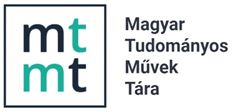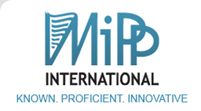Oleynik O.S., Oleynik A.B., Stepanova E.V. Features of Measuring Poverty Indicators: International and Russian Experience
Olga S. Oleynik
Volgograd Institute of Management, Branch of the Russian Presidential Academy of National Economy and Public Administration, Volgograd, Russian Federation
Andrey B. Oleynik
Volgograd Region Branch of the Southern Main Department of the Central Bank of the Russian Federation, Volgograd, Russian Federation
Ekaterina V. Stepanova
Volgograd Institute of Management, Branch of the Russian Presidential Academy of National Economy and Public Administration, Volgograd, Russian Federation
Abstract. The paper provides a comparative analysis of methodological approaches to poverty measuring in the Russian Federation and in the global perspective in the current situation on the following key aspects: methods of poverty measuring in official statistics, problems in defining and measuring subjective poverty in different countries. Through the empirical qualitative research we analyzed a wide base of official data and reports of the United Nations Economic Commission for Europe (UNECE), the Eurasian Economic Commission (EEC), the Interstate Statistical Committee of the Commonwealth of Independent States (CIS STAT), the Federal State Statistics Service, and subsequently analytically interpreted them. According to the results of the study, it was concluded that different countries use various methods of measuring the level of poverty and criteria for its assessment. This situation does not relate to the analytical needs of the society, government authorities and scientists. The Guide of UNECE was developed in order to ensure international comparability and accessibility of poverty indicators. The Guide substantiates the indicators and identifies the needs for appropriate baseline data for measuring poverty, and offers methodological recommendations for national statistical services. The multidimensional measurement of poverty is currently relevant. This approach allows to take into account not only monetary indicators, but also other aspects of people’s life, such as health, living conditions, education, involvement in economic and social relations, etc. The study of the methodological features of poverty measuring in Russia revealed the need for a more detailed development of poverty indicators. At present, the Federal State Statistics Service is adopting new measures in order to include the Indices of Material Deprivation and Poverty and Social Exclusion Risk into the national list of indexes of Sustainable Development Goals. In addition, currently the transition to new methodological and practical approaches to Population Income Survey is being carried out.
Key words: poverty, household budgets, cash income, methodology, household needs, poverty income threshold, financial constraints.
Citation. Oleynik O.S., Oleynik A.B., Stepanova E.V., 2020. Features of Measuring Poverty Indicators: International and Russian Experience. Regionalnaya ekonomika. Yug Rossii [Regional Economy. South of Russia], vol. 8, no. 4, pp. 53-63. (in Russian). DOI: https://doi.org/10.15688/re.volsu.2020.4.5
Attachments: /eng/contacts/5_Oleynik_i_dr.pmd..pdf







